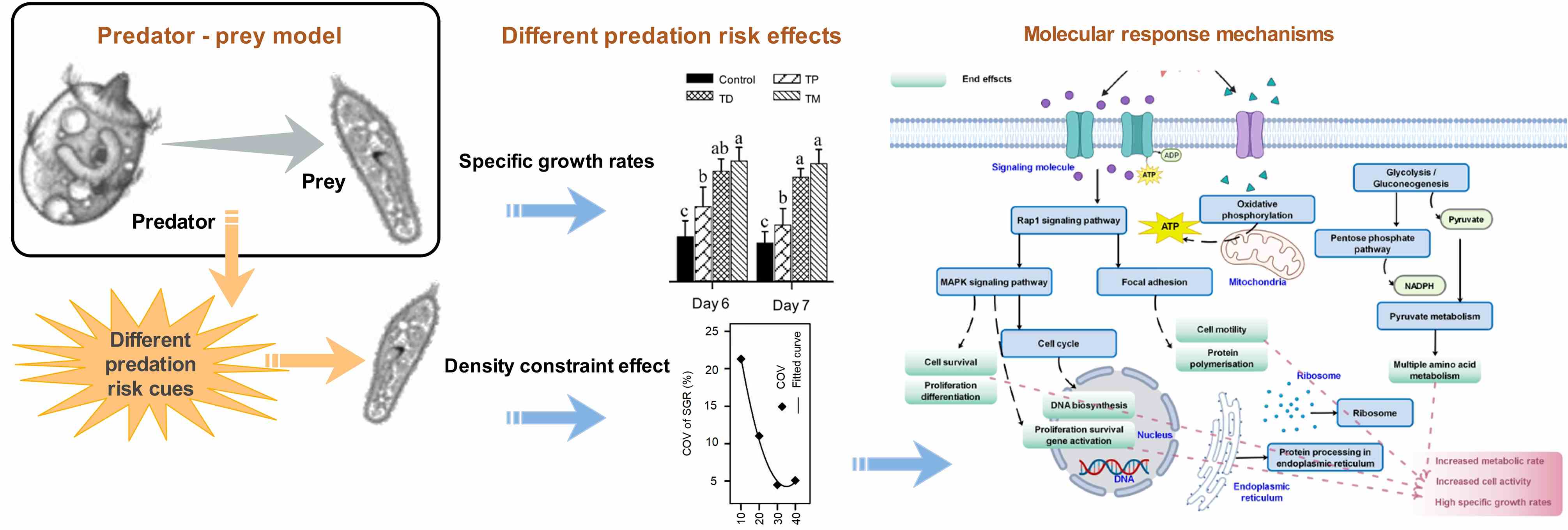Prey's survival strategy similar but underlying mechanisms vary with predation risk cues
Published 15 May, 2025
A study published in Water Biology and Security investigated non-consumptive effects by linking prey physiological responses to molecular mechanisms to improve the understanding of predator-prey interactions in microbial ecosystems.
“From a methodological perspective, this study establishes an ideal experimental model system for the study of prey-predator interactions in microanimals,” says senior and corresponding author Jiqiu Li. “We successfully obtained ideal predation risk cues by isolating prey and predators through creative experimental settings.”
On that basis, the researchers used Didinium-Paramecium as a predator-prey model to first evaluate the effects of various predation risk cues. These include homogenates of predators and prey alone or in combination, as well as the density of conspecific prey on the specific growth rate, to determine their adaptive strategies and their underlying response mechanisms based on transcriptomic analysis. This provided a new approach for quantitative assessing non-consumptive effects in aquatic environment.
“Theoretically, the adaptive strategies of prey and the response mechanisms to various predation risk cues remain unclear,” explains Li. “This study confirmed that the attributes of predation risk cues didn’t influence the prey survival strategy, since the tested ciliates employed early reproductive strategies to combat the predation risk caused by different risk cues.”
Moreover, predation risk effects decreased with increasing conspecific prey density. Surprisingly, transcriptomic response mechanisms differ in pathways, and in their location, in bioprocess, which relies on predation risk cue attributes.
“The findings hence confirm our hypothesis that prey adopt a similar adaptive strategy to address different predation risks, but their response mechanisms depend on the attributes of predation risk cues,” says Li.
In summary, this study enhances our understanding of adaptive strategies to predation risk by elucidating the response mechanisms of prey ciliates to different predation risk cues. At the same time, this study provides the foundation for the rational assessment of non-consumptive effect in aquatic microecosystems.

Contact author:
Dr. Jiqiu Li
*Corresponding author (J.Q., Li). College of the Environment and Ecology, Xiamen University, Xiamen 361102, Fujian, China.
E-mail address: lijiqiu@xmu.edu.cn.
Funder:
This work was supported by the National Natural Science Foundation of China (project nos. 31971519, 42176145), in part by a grant from the Xiamen University Principal Fund Project (No.: 20720200109 and 20720200106).
Conflict of interest:
All authors have confirmed the following:
- The authors have no conflicts of interest;
- The manuscript contains only original data and is the original work of the authors;
- The manuscript has not been submitted or previously published elsewhere.
See the article: https://doi.org/10.1016/j.watbs.2025.100364

